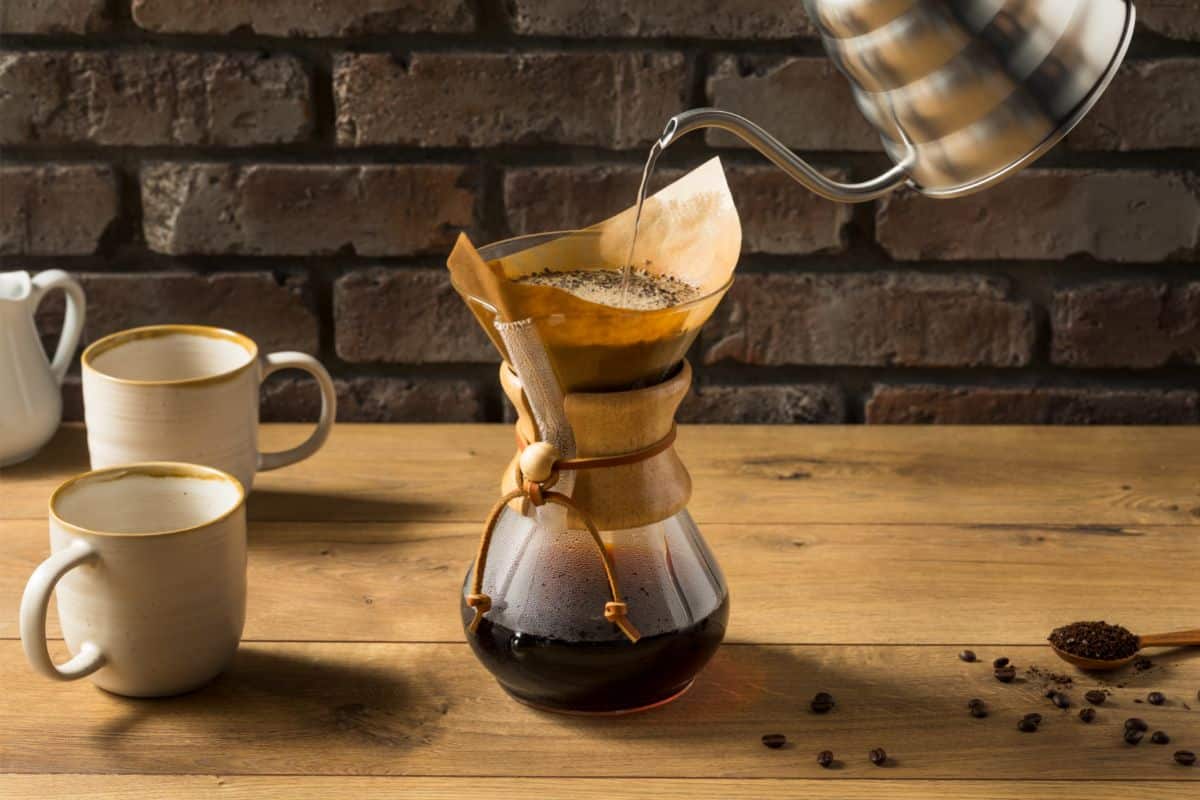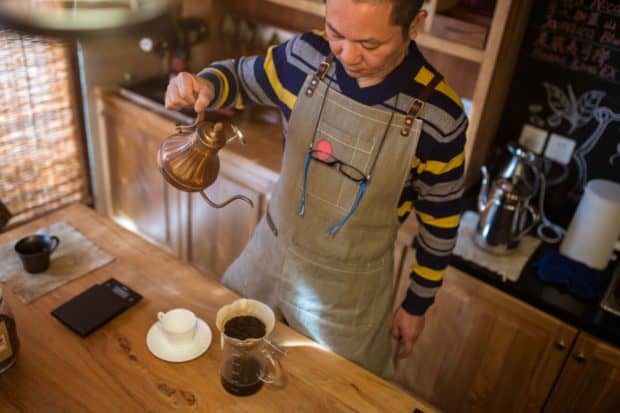Just so you know, as an Amazon Associate we earn from qualifying purchases made via bold red links, buttons or images.
Last Updated on December 27, 2023
You don’t need a gooseneck kettle to make pour-over coffee, but it sure helps.
A gooseneck kettle gives you maximum control over how fast the water flows, and where it is directed.
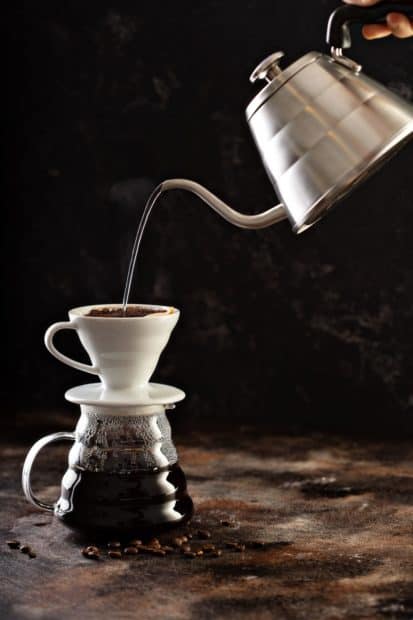
This control lets you optimize extraction—the chemical reactions that happen when your hot water interacts with coffee grounds.
During extraction, the water draws compounds out of the beans and dissolves them. The first flavors it draws out are quite acidic. After that come the sweet, fruity flavors. Finally, the bitter, unpleasant ones.
When you brew coffee, you want to pull out some of the acidity, all the nice flavors in the middle, and maybe a hint of bitterness—but not too much.
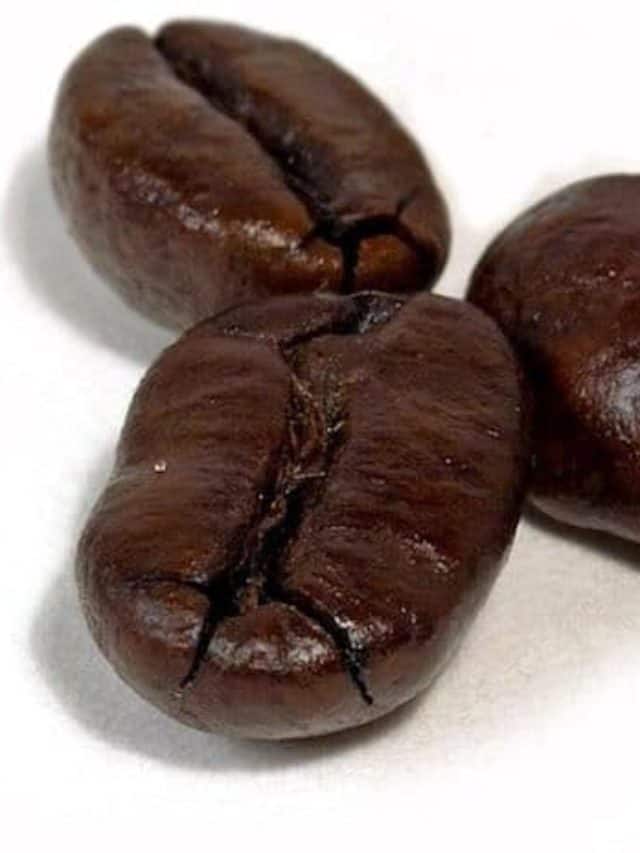
To get it right, you need the coffee granules to be uniform in size, and have contact with the water for just the right amount of time.
We call this even extraction, and it is always the goal.
Uneven extraction happens when some granules spend more time in contact with water than others—or they’re just bigger and take a longer time to extract. (This is why we don’t recommend blade grinders.)
Uneven extraction results in the worst of both worlds—sour acidic flavors from granules that are under-extracted, and bitter, astringent flavors from those that are over-extracted.
Even extraction results in a cup full of the good stuff.
How a Gooseneck Kettle Helps
Accuracy
You need to direct water to the appropriate places on the coffee bed to ensure even extraction.
The best way to do this is to start in the center and move gradually in concentric circles toward the perimeter as you pour, and then back in again.
Because pour-over cones are deepest in the center, that’s where most of the coffee is. You want to spend a little more time pouring in that area. A gooseneck can help you achieve precise pouring.
Accurate pouring also helps you avoid a problem called channeling, which is more common with espresso but can impact your pour-over. Channeling is when the water travelling through your bed of coffee grounds finds the path of least resistance and begins to flow more heavily through one particular path. The grounds along that path become over-extracted, while the others remain under-extracted.
Control Over Brew Time
The ideal period of time for coffee grounds to spend in contact with hot water is between three and four minutes. A gooseneck kettle can make this happen—assuming your coffee grounds are an appropriate size.
If you have a clumsy kettle and dump all the water in at once, the water flows through the grounds more quickly than you’d like and shortens the brew time.
The narrow spout of a gooseneck kettle lets you slow the flow of water to just a trickle—enough to keep the grounds under water, but not so fast that the brewing ends too early.
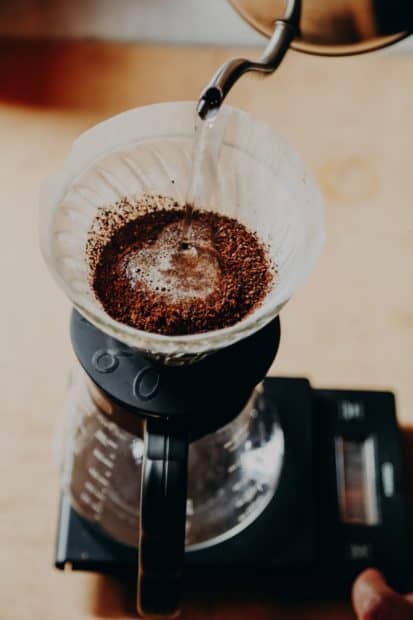
Pulsing is a technique many brewers use to prolong brew time when making pour-over coffee. It simply means pouring water in stages during the dilution phase. Water poured all at once will drain more quickly from the cone than if you divide it up into several smaller pours. The more pulses, the longer the extraction time.
Agitation
Agitation can be an important aid in coffee extraction. It means causing movement of the coffee grounds while they are in contact with the hot water. A gooseneck kettle can help you do it with complete control.
If you think about the French press brewing method, there is no agitation. The coffee grounds simply sit there, immersed in water.
In pour-over coffee, the act of pouring causes agitation. The water hitting the slurry churns the coffee grounds as it enters.
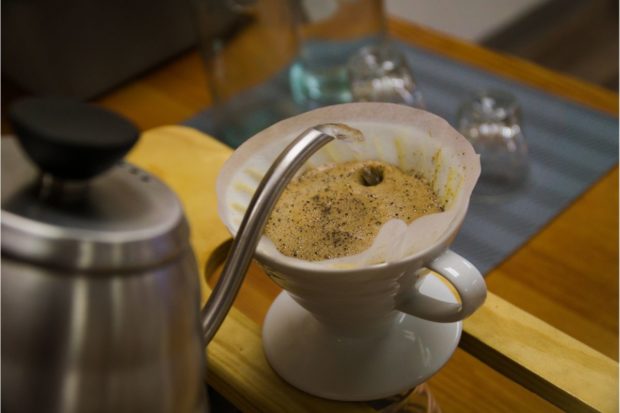
You can see how the slow, controlled pour of a gooseneck kettle allows constant agitation for almost the entire brewing time, in contrast to a fast pour that agitates only at the beginning when the cone is filled. After that, the grounds settle while waiting for the water to drain out.
Consistency
When you nail a good brew, you want to be able to repeat it. Consistency is the key to repeatability.
Imagine making pour-over coffee with a wide-spout kettle that splashes hot water into your Hario V60. You might get lucky and have the coffee turn out great, but how are you going to repeat it? The pouring is so random the first time around that it’s almost impossible to do it the same way again.
With the precision of a gooseneck kettle, you can more easily repeat your method in future brews.
Comfortable Handle
We’d be remiss if we didn’t mention the well-designed handles of gooseneck kettles. They, too, are designed to give you maximum control and comfort as you pour.
A traditional kettle might have a handle that arches right over its top, forcing you to grip it tightly and raise your elbow at an awkward angle as you tilt and pour into a cone. A gooseneck kettle knows what you’re trying to do and the ergonomic handle is in just the right place for it. It usually has a very comfortable grip as well.
As an example, the Hario Buono electric gooseneck kettle has an ergonomically designed handle with a nice grip for easy pickup:
By now, you’re probably seeing the benefits of a gooseneck kettle. But you might also be wondering why I suggested at the top of this article that it’s not absolutely necessary.
The truth is that any kettle can make pour-over coffee. A gooseneck just makes it better. Remember, kettles aren’t simply gooseneck or non-gooseneck. Their necks exist along a spectrum, as you can see in this image:

These kettles would offer varying levels of control when you pour hot water. The one on the left offers very little. The gooseneck on the right offers a lot. But the level of control goes up in small increments as you move from left to right.
You can make pour-over coffee with any of these kettles, but you’ll have an easier time making better coffee the further you move to the right, because you will have more control.

